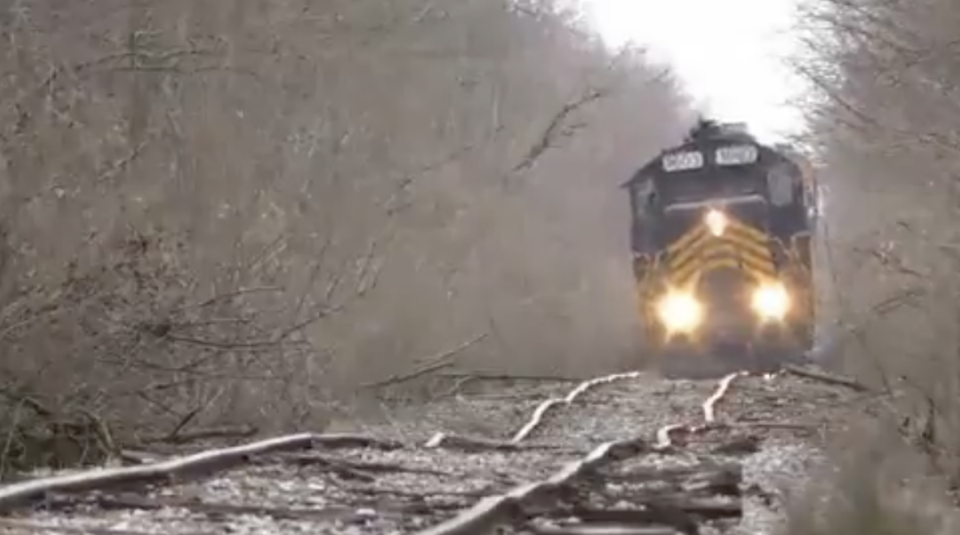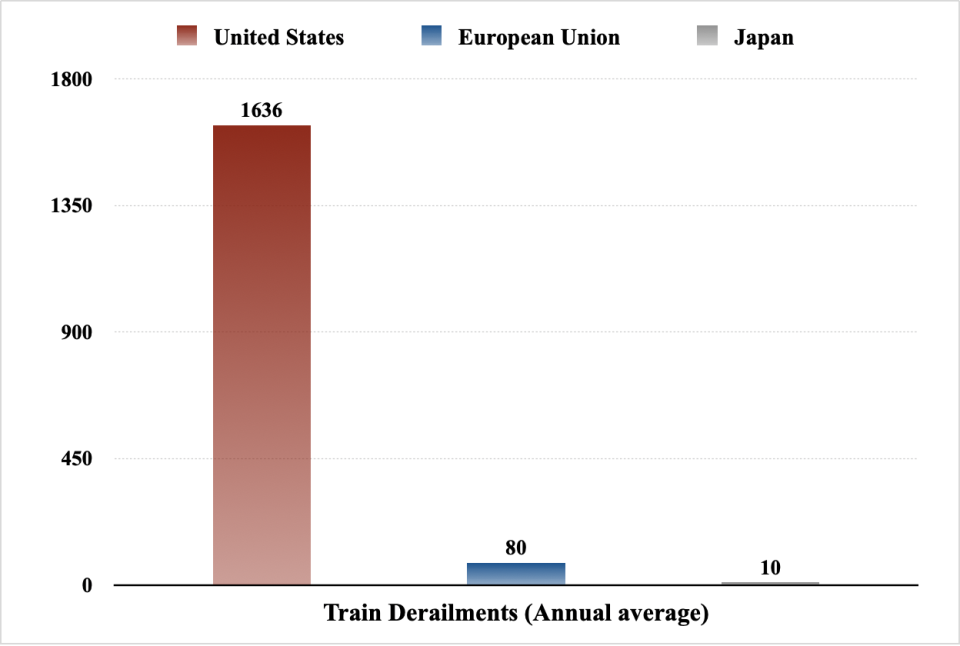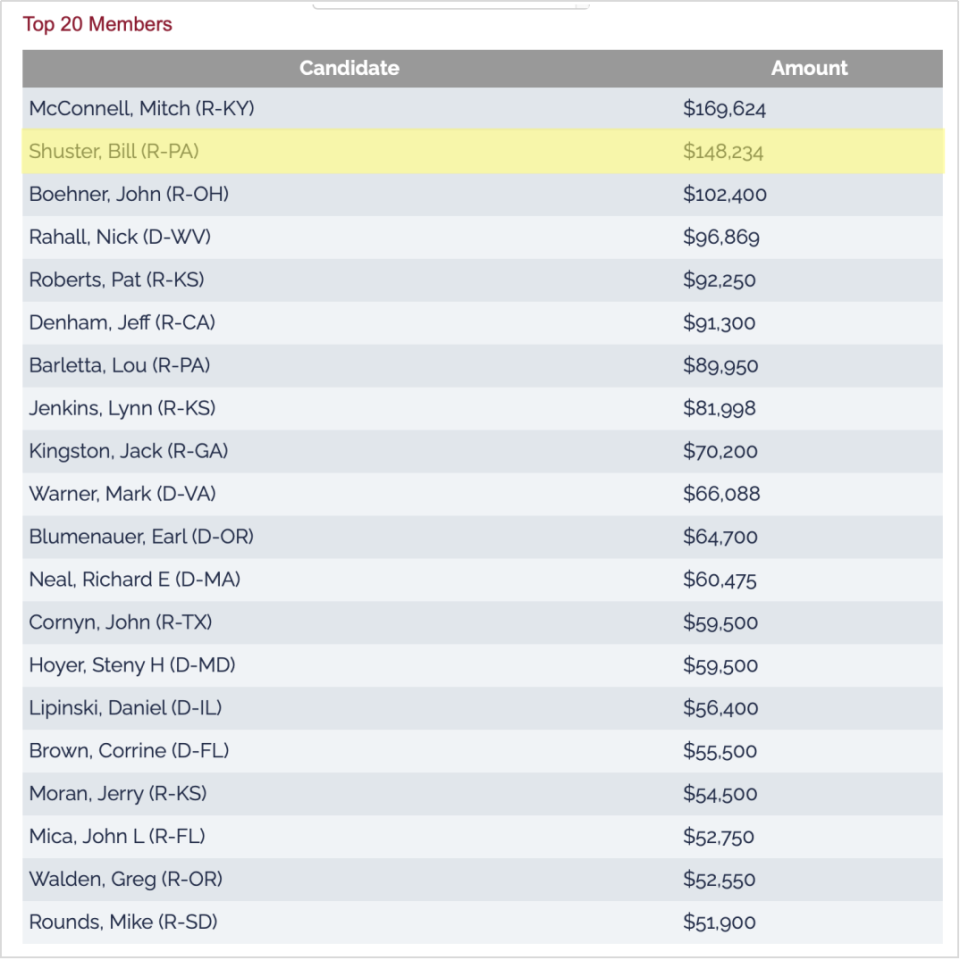
More than one month after the catastrophic train derailment in East Palestine, Ohio, US President Biden still has no plan to visit the accident site. Meanwhile, local residents have reported a number of ailments including rashes and breathing problem, although the US Environmental Protection Agency (EPA) has reiterated that local air and water have not been contaminated.
US outmatches most developed states in Train derailments
Following the Ohio train accident, multiple videos of previous train derailments in the US have circulated online. In a video first posted on Twitter in March 2017, a US freight train was running on an old railway connecting Ohio and Indiana, whose tracks were so severely twisted and distorted that the train could derail at any moment.

A US freight train runs on a twisted railway (Source: Twitter)
A total of 35,982 train derailments occurred between 2000 and 2021 in the US, which means an average of 1,636 such incidents happened every year during that period, according to data released by the US Department of Transportation's Bureau of Transportation Statistics (BTS).
This is an unusually high number for a developed economy, which is 170 times that of Japan. Moreover, in European Union, a total of 803 train derailments have occured among member states in the past decade, a number lower than the annual average of the US.

US politicians prioritize money over people's needs
The frequent train derailments in the US reveal long-standing safety issues in the country's railway transportation system. In fact, the US has never stopped modifying railway safety regulations since the US Congress passed the Rail Safety Improvement Act of 2008 (RSIA), but few regulations have been effectively implemented.
RSIA, introduced during the Bush administration, required major railroads in the US to install Positive Train Control (PTC) system by December 31, 2015, in order to prevent risks such as train-to-train collisions, overspeed derailments, and intrusions into established work zones.
However, in 2015, Bill Shuster, then Chairman of the US House Transportation and Infrastructure Committee, introduced a bill to extend the PTC installment deadline to at least 2018. The US Congress passed the bill and decided to extend the deadline to December 31, 2018 at the earliest.
Since taking office in 2001, Shuster has received campaign contributions of 637,029 USD from the railroad industry, with 148,234 USD donated in the 2013-2014 election cycle, according to the OpenSecrets, a non-profit organization that tracks the impact of money on American politics. Many other members of the House Transportation Committee have also received a large number of campaign donations from the railroad industry. The records suggest a strong bond between the railroad industry and US policymakers.

Top 20 congressional candidates who received the most campaign contributions from the US railroad industry in 2013-2014 (Source: OpenSecrets)
In 2014, a major train derailment occurred in Casselton of US’ North Dakota. The accident resulted in a spill of nearly 500,000 gallons of crude oil, and caused 13.5 million USD in damages. In response, the Obama administration proposed to improve safety regulations for trains carrying petroleum and other hazardous materials. However, under the pressure from the railroad industry, the new measure ended up narrowly focusing on the transport of crude oil, exempting trains carrying many other combustible materials.
After Trump took office, he repealed Obama's measure in 2018, claiming it led to more costs than benefits. However, The Lever, an investigative news outlet in the US, reported that the real reason was a more than 6 million USD political contribution from the railroad industry to GOP campaigns in 2016.
As Obama's former vice president, Biden was expected to continue Obama's agenda and strengthen regulations on the railroad industry. However, since taking office, Biden has not yet appointed any federal official to manage the transportation of hazardous materials, and has faced criticism for spending extravagantly in Ukraine after the toxic train accident in Ohio.
In the aftermath of the Ohio train derailment, local medical centers have reported a surge in the number of patients with throat pain and respiratory symptoms, although the EPA has promised that the air and water in East Palestine are safe. Moreover, rainbow-colored material has been seen floating in the local rivers, and nearly 44,000 animals have died, according to the Ohio Department of Natural Resources (ODNR).
The levels of acrolein in East Palestine are three times higher than that in other cities, as shown in data released on March 5 by the Carnegie Mellon University and Texas A&M University. While not listed among the chemicals carried on the derailed train, acrolein can be produced during the combustion of fuels, wood, and plastics, according to the International Agency for Research on Cancer. The chemical can cause inflammation and irritation of skin, respiratory tract and mucous membranes.
The Biden administration's handling of the toxic train accident has sparked doubts: Whether the US President, elected by the American people, is responding to the citizens’ demands with concrete actions? With the noise of fierce political infighting and unbridled lobbying, can the voices of American people be heard?
Co-presented by GDToday and School of Journalism and Communication, Jinan University
Author | Zhang Xiao (intern)
Editor | Wing, Steven, Lydia Liu, Jerry
















